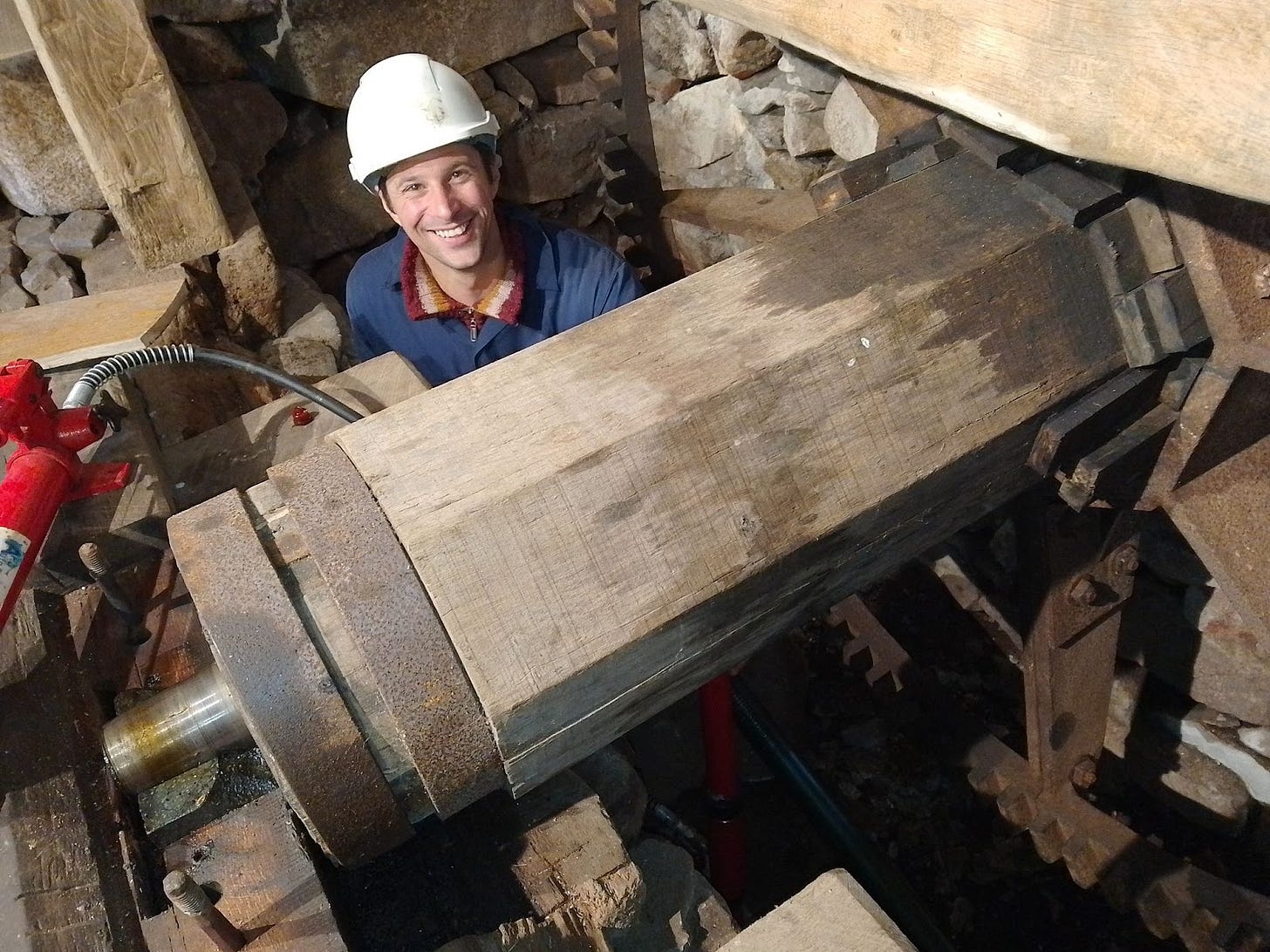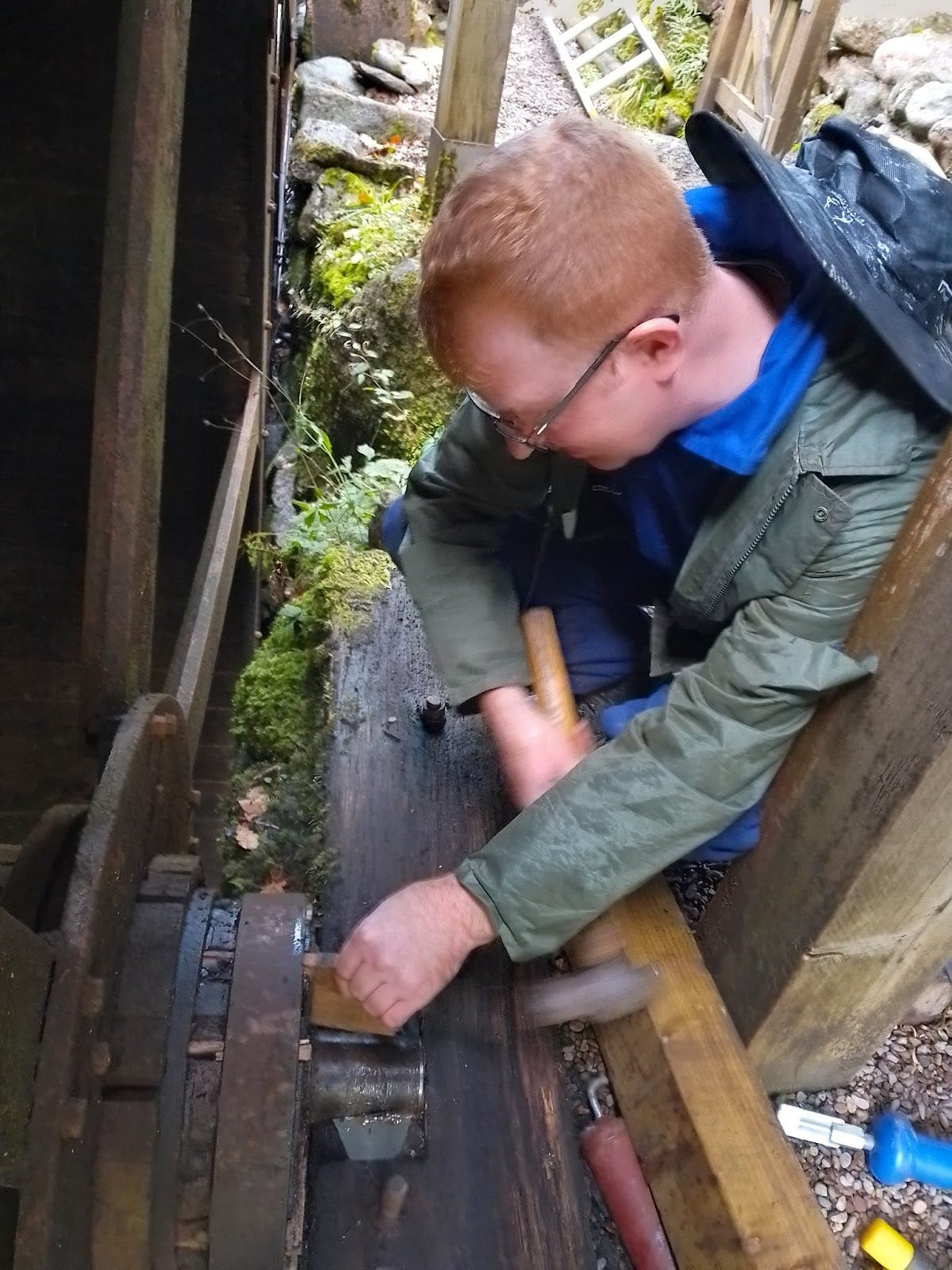Talking to mill technicians is a good way to expand your vocabulary. For instance, I’d never heard the word “gudgeon” before I talked to Stuart and Steve about their recent visit, as part of the Near Far Heron project, to the Eskdale Mill at Boot.
According to the OED a gudgeon is -
A pivot, usually of metal, fixed on or let into the end of a beam, spindle, axle, etc., and on which a wheel turns, a bell swings, or the like
The beam at Eskdale Mill is a mighty great piece of wood, and you can see the metal end sticking out. This metal part is called the “journal”, and the gudgeon is what holds it tightly in place in the end of the axle.
When the axle was made, the wood was trimmed like a pencil - both along its length and at the end where the metal bands are.
Before anything else could be done, the axle needed to be jacked up to take the weight of the wheel.
The gudgeon needs to be fitted tightly into the end of the axle. It has to support the weight of the wheel and let the journal sit securely in the bearing without the slightest suggestion of rocking. It’s quite complicated!
Put simply, you have to pack the gudgeon into the end of the axle so tightly that it can’t even think about shifting. Think of a screw held tight by a rawlplug, or a lintel packed tight with slates.
The end of the axle has a “+” shape cut into it. This allows the gudgeon to be pushed in and then wedges to be driven in to pack it really tight. It was the wedges that needed replacing at Eskdale Mill.
Here you can see two wings of the gudgeon, at 10 o’clock and 2 o’clock, with one wedge removed at 2 o’clock and a new wedge ready to go in at 10 o’clock. Between the wings of the gudgeon you can see the end of the wooden axle.
This is a useful tool for getting rotten wedges out - a bit like an industrial corkscrew. The wood was so rotten that Steve had trouble getting a good purchase on the wedge.
With the old wedge removed, Stuart was able to bash in the replacement.
With all the rotten wedges replaced, off with the jack and let her roll! You can see seven new wedges as the axle turns round.
It’s turning nicely again! As it’s an overshot wheel, the water goes right over the top and the wheel turns in the same direction as the flow of water.
Near Far Heron has been made possible thanks to generous funding from The National Lottery Heritage Fund.










I have so enjoyed reading this and watching the video's. Our world has changed so much but actually seeing and understanding the technology of almost a bygone age, is really refreshing. Thank you.
Great work Pete, this is so useful!